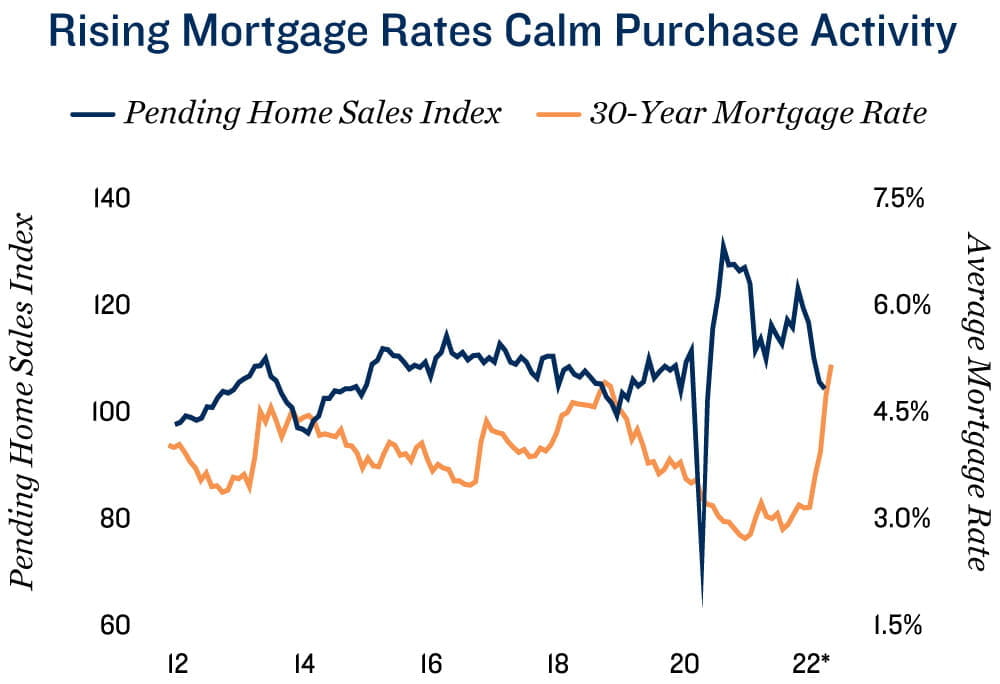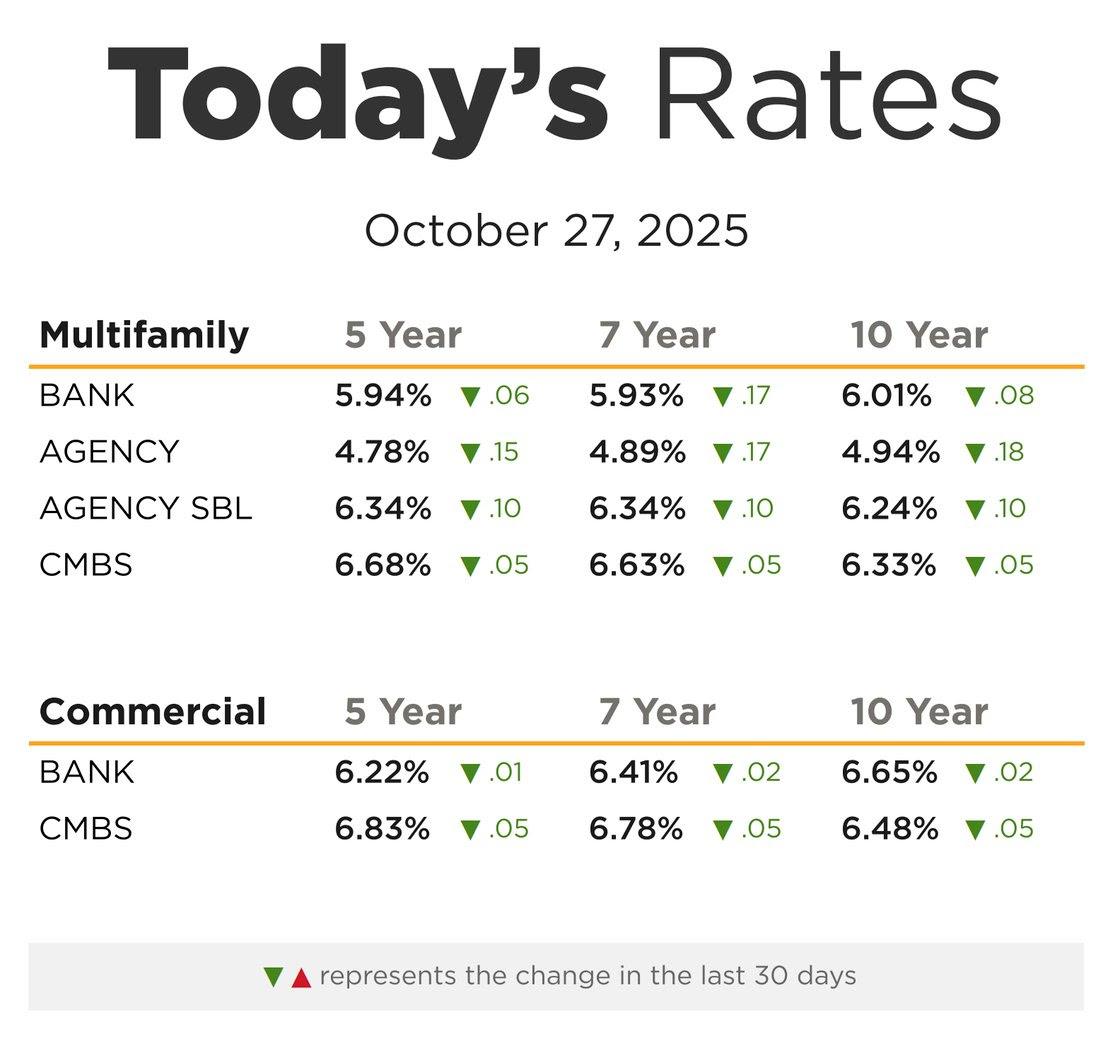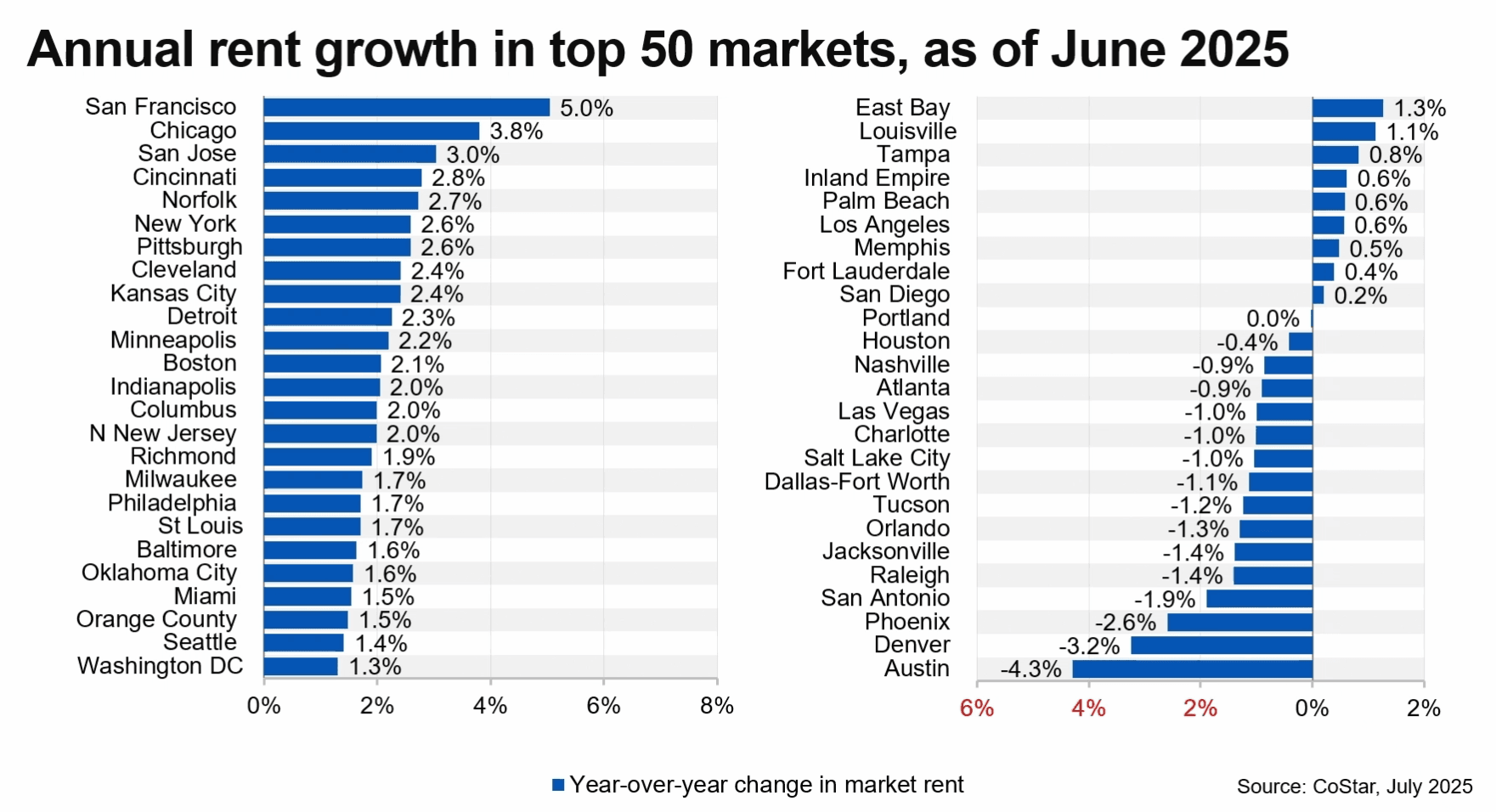Pending home sales reveal the impact of mortgage rate surge.
Upward pressure on mortgage rates from lofty inflation and the Fed’s plan to hike interest rates multiple times this year influence home buying. In late April, the average rate for a 30-year mortgage climbed for the seventh consecutive week to 5.1 percent, up 200 basis points from the beginning of this year and almost twice as high as the 2020 trough. While demand for homes remains sturdy, the higher cost of borrowing is condensing buying activity. The pending home sales index illustrates this trend, with the March measure the lowest since early 2020 and 8 percent beneath the recording one year prior. However, a slowdown in purchases has not yet weighed on price growth. The median sale price of an existing home rose 1.3 percent month-over-month in March.

Multifamily still in a strong position if the housing market cools. The recent mortgage rate swell and coinciding moderation of home purchases has the potential to temper price growth, but the affordability gap relative to apartments remains substantial. The difference between an average monthly mortgage payment and a rent obligation stood at $638 in the first quarter of 2022. By comparison, that margin was $440 during the same period in 2021. Not only do apartments appeal as a significantly more affordable living option, they also offer greater flexibility via short-term leases, require little maintenance by tenants, and sometimes provide attractive amenities, such as workout facilities and pools. These factors will sustain multifamily momentum, keeping the national vacancy rate extremely tight in the mid-2 percent range in 2022.
The mortgage rate climb pushes demand toward luxury rentals. Higher-end apartments are poised to benefit in the new mortgage rate climate. Growth in the professional and business services and financial activities segments, which typically offer above-average wages, enlarges the prospective renter pool. In prior years, this grouping may have been inclined to purchase a home, but elevated borrowing costs, paired with high prices, are making this difficult. Low-Class A vacancy amid demand tailwinds should forge the conditions for the record supply wave to be well received this year.
Developing Trends
The number of homes for sale ticks up. In March, existing home listings rose month-over-month, which had not happened since July of last year. This may indicate that some owners waiting to list amid fast appreciation were coaxed into selling as mortgage rates rose. The opportunity to lock in favorable financing on a home they plan to move to before rates increased further was a motivating factor. At the same time, expectations for additional appreciation may subsist as purchase activity tapers. This is a step toward cooling the supply-demand imbalance, but historically, the for-sale count is still minute. The 890,000 existing homes listed in March is below every month between 1982 and 2021.
Costs of new homes skyrocket, despite fewer purchases. The median price of a newly built single-family house reached $443,000 in March, escalating by more than 4 percent from February. During the same month, the number of new homes for sale notched a 13-year high, while the amount of these dwellings sold dropped to a four-month low. If these trends persist, upward pressure on newly built home prices could wane.
33.4% |
-12.6% |
| Year-over-Year Change in New Homes for Sale | Year-over-Year Change in New Homes Sold |
* Pending home sales through March; Mortgage rate through April 21, 2022
Sources: Marcus & Millichap Research Services; Capital Economics; Freddie Mac; Moody’s Analytics; Mortgage Bankers Association; National Association of Home Builders; National Association of Realtors; RealPage, Inc.; U.S. Bureau of Labor Statistics; U.S. Census Bureau; Wells Fargo
Receive Market Insights
Periodic analysis on rents, pricing, cap rates, and transaction activity across Chicago and key suburban markets.



